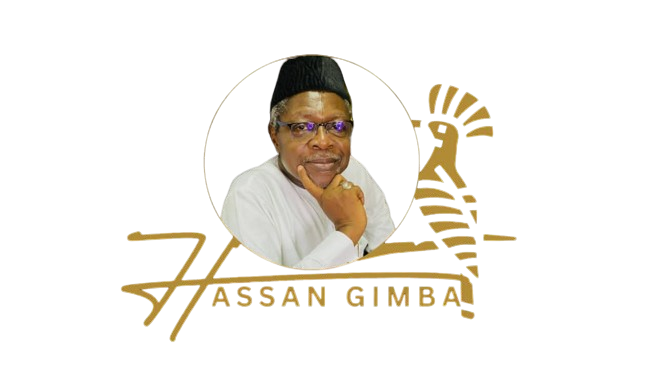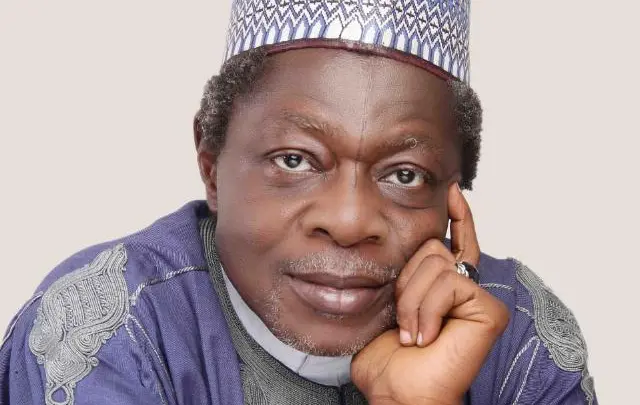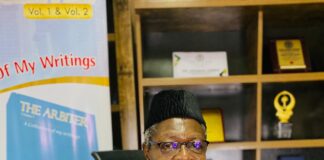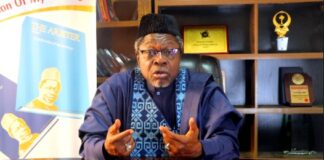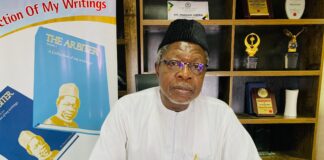The Arbiter
Former President Goodluck Ebele Jonathan has written a book, My Transition Hours, which was presented to the public the day he turned 61 on November 22, this year. As with all books of such nature written by people of his calibre, it has generated controversies and even blame games from some quarters.
Being from the North East, a region that featured prominently in the book, not for much else but for Boko Haram, a so-called Islamist group that derives its ideology from the Wahhabi school of thought, that has wreaked havoc there, I am more interested in how to deal with their menace that is, unfortunately, resurging in an alarming manner.
Prior to the 2015 elections, Boko Haram had seized at least 14 local government areas in Borno State and two from Yobe, all together larger than Belgium with a landmass of 30,528 square kilometres.
In page 63 of the book, former President Jonathan wrote: “A short while before the election was rescheduled, Boko Haram militants had taken hold of a large cache of military-grade weaponry, including Armoured Personnel Carriers from retreating Nigerian troops.
“…The group had almost five thousand fighters behind its growing effort to carve out an Islamic caliphate in the North Eastern geopolitical zone of Nigeria, around Cameroon, Chad and Niger Republic borders. Tension was thus further inflamed.”
The then-president reasoned, and rightly so, that ‘it was my duty to keep the country intact after my service and [I] was not going to let the country go into crises that could even lead to disintegration’.
He had to postpone the elections by six weeks, even though the opposition, Nigerians in diaspora and even the international community “had a different and unrealistic view of the situation” because “they were focused on just the elections”.
The former president continued on page 67: “Anyhow, the six weeks served us well. We received the military equipment we were expecting within that period and our Armed Forces commendably dealt a deserving blow on the terrorists and repossessed all territorial areas of Nigeria previously occupied by the terrorists. Boko Haram was deflated up to the point I handed over to my successor on May 29, 2015.”
While what was written by former President Goodluck Jonathan should not blind us to what is happening now – anyone who feels the book did not chronicle events correctly should come up with their own – our attention should be more riveted towards what he did right to give Boko Haram terrorists a bloody nose and what is amiss now that they are rebounding with boldness.
It must be worrisome to all Nigerians, particularly the government whose first responsibility it is to provide security to the citizens.
What is wrong with our Armed Forces that a rag-tag militia like the Boko Haram is over-running them, killing them in numbers and confiscating military hardware from them? Is it to do with their capacity or otherwise?
Anytime the Boko Haram people deal them a fatal blow, all we hear is that the Service Chiefs have been directed to relocate to the war zones. You will never hear when the order is rescinded but the next attack will be followed by another order for them to relocate, never a query on why they left the region in the first place.
But the most important thing to ask is, is their relocation to the battlefront the panacea to the Boko Haram scourge? In other words, will their presence instil fear in the insurgents to take to their heels? Or will it give our troops the capacity that seems to be lacking?
I came across an article entitled, “The Rise, Fall, and Rise Again of Boko Haram” in the Harvard International Review of February 1, 2017, written by one Eeben Barlow. Eeben Barlow served as a Lieutenant Colonel in the pre-1994 South African Defence Force (SADF) in conventional, clandestine and covert units. He founded and is chairman of Executive Outcomes (EO) where he trained SADF Special Forces in covert operations.
The following is an excerpt from his article:
CONTRACTING A PMC
In mid-April 2014, Boko Haram staged a mass school kidnapping in the town of Chibok in Borno State. Although some of the schoolgirls managed to escape, a total of 219 girls—eventually referred to as the ‘Chibok girls ’—were taken hostage.
Despite the United States and United Kingdom intelligence services knowing where the missing girls were being kept, this intelligence was not shared with the Nigerians, as the West did not trust the Nigerian troops it had trained to conduct a rescue operation. All attempts by the Nigerian Army to locate and rescue the girls failed—despite US training and support—and Boko Haram grew in reputation and confidence.
As the 2015 general election loomed closer, the ruling People’s Democratic Party (PDP) of Nigeria made a conscious decision to reject all foreign military assistance and, instead, contract a Private Military Contractor (PMC) who, in turn, looked towards South Africa for an answer to the Boko Haram question.
Special Task, Training, Equipment and Protection (STTEP) International Ltd. STTEP is a South African PMC that has worked across Africa and has extensive experience in advising, training, and mentoring African armies in combating armed anti-government forces. Its record is both unblemished and unparalleled.
Drawing its manpower primarily from both the pre-1994 South African Defence Force (SADF) and the South African Police’s Task Force, as well as the armed wing of the opposing African National Congress’s (ANC) UmkhontoweSizwe (MK), STTEP comprises members of both African and European descent and is viewed by numerous African governments as a true African PMC that provides African security solutions to under-siege governments.
ASSESSING THE NIGERIAN ARMY
The Nigerian Army, according to Barlow, is a clone of its once-colonial master, the United Kingdom. Organized and trained to fight according to a European doctrine unsuited to a harsh and unforgiving African environment, and the terrorist threat facing Nigeria, the army was unable to withstand attacks by mobile and manoeuvrable Boko Haram. Furthermore, lacking in battlefield intelligence, Boko Haram was able to strike at will, forcing the Nigerian army to fight defensively with little to no battlefield initiative.
Indeed, Boko Haram’s actions instilled fear not only in the local population but also in the army units facing them. This resulted in numerous army units being overrun and withdrawing from the engagement areas, leaving valuable equipment in their wake—equipment Boko Haram would later use in its terror campaign. Poorly trained and lacking actionable and credible battlefield intelligence, the Nigeria units facing Boko Haram were also poorly equipped, lacking in morale, and lacking both air reconnaissance and air support. This resulted in the Nigerian forces applying predictive tactics unsuitable to both the terrain and the threat.
Unable to pre-empt Boko Haram actions, along with an outdated and unsuited doctrine and little or no real political will to halt and strike decisive blows against Boko Haram, the combat units were denied manoeuvre options and were unable to apply attrition actions against Boko Haram with direct and indirect delivered fire.
Arriving in Nigeria in mid-to-late-December 2014, STTEP’s trainers were dismayed at the level and standard of training the Nigerian troops had received from their foreign trainers. Much of this training is focused on window-dressing, but when you look through the window, the room is empty.
